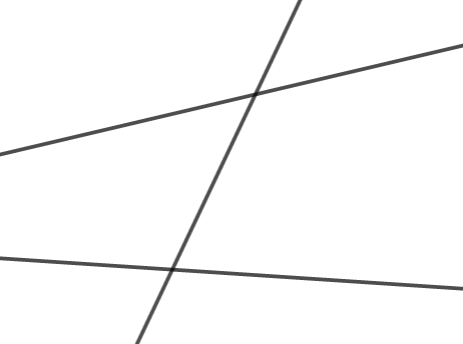Explore parallel lines
Expand the section below. Are the long lines parallel?
Let’s learn about angles on parallel lines.
A transversal is a line that cuts two or more lines. When a transversal cuts two or more lines, some special angles are formed.

Here’s the lowdown: If the arms of two angles form a shape looking like the letter C or U, those angles are called co-interior angles. The C or U could be backwards or upside-down, and it might look a bit wonky.
Have a look at this co-interior angles interactive.
What do you notice about co-interior angles on parallel lines?
Here’s the lowdown: If the arms of two angles form a shape looking like the letter Z or N, those angles are called alternate angles. The Z or N could be backwards or upside-down.
Have a look at this alternate angle interactive.
What do you notice about alternate angles on parallel lines?
Here’s the lowdown: If the arms of two angles form a shape looking like the letter F, those angles are called corresponding angles. The F could be backwards or upside-down.
Have a look at this corresponding angles interactive.
What do you notice about corresponding angles on parallel lines?
|
|
Open this interactive page and explore it by following these steps:
|
|
|
